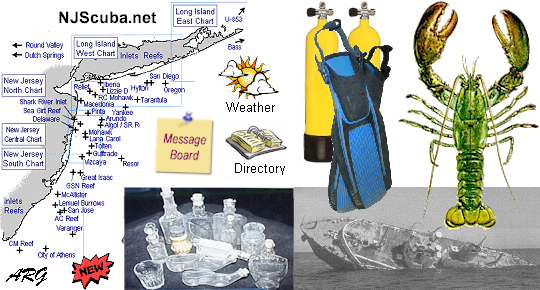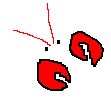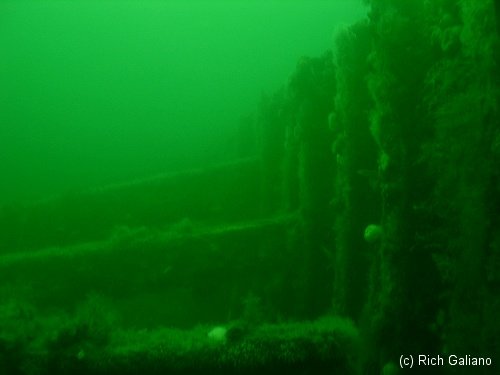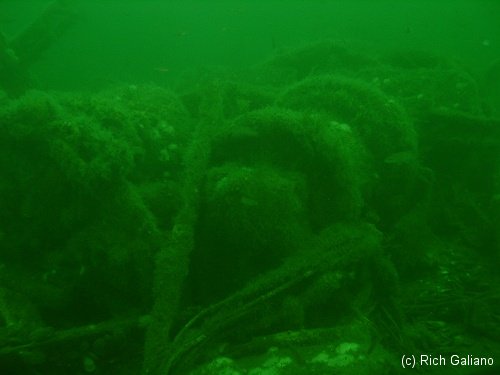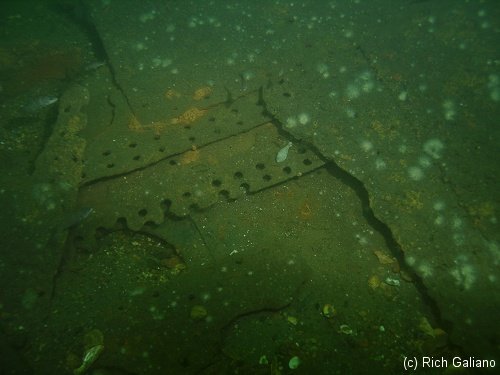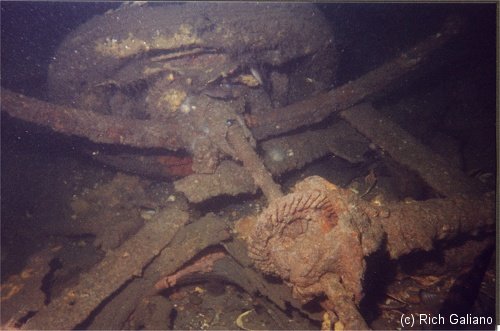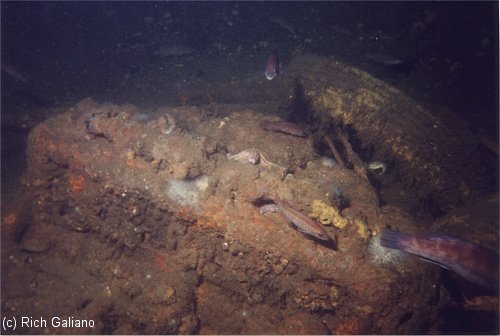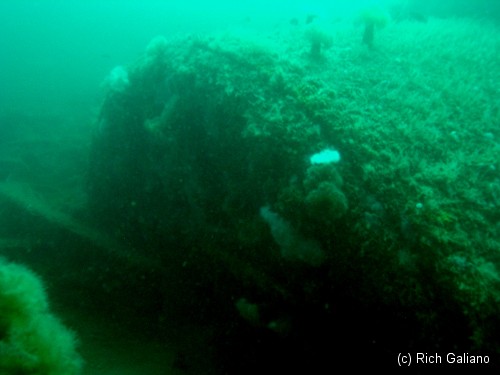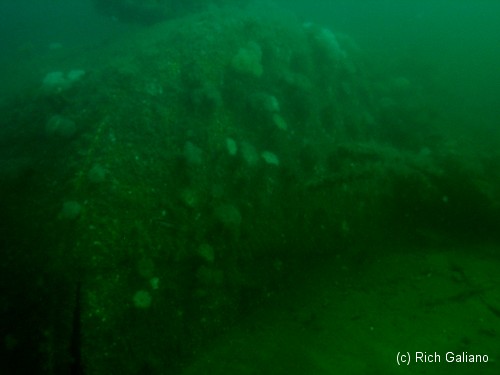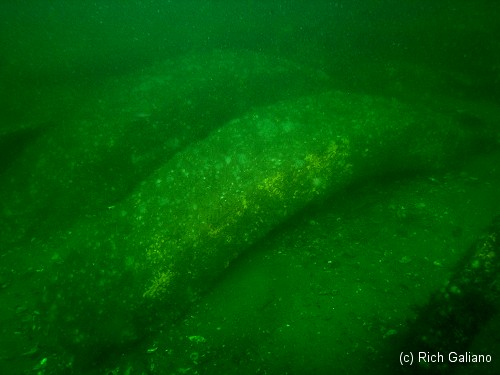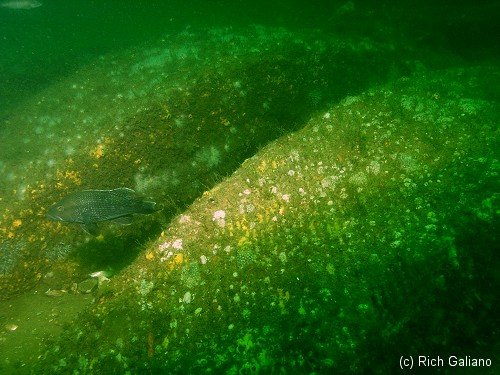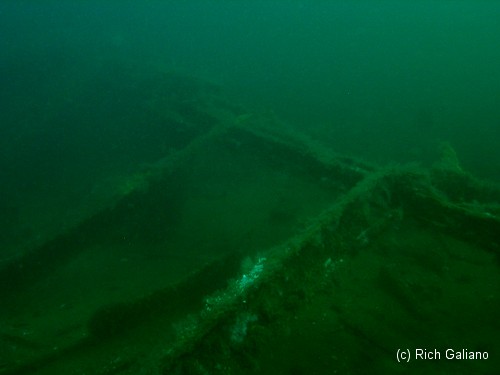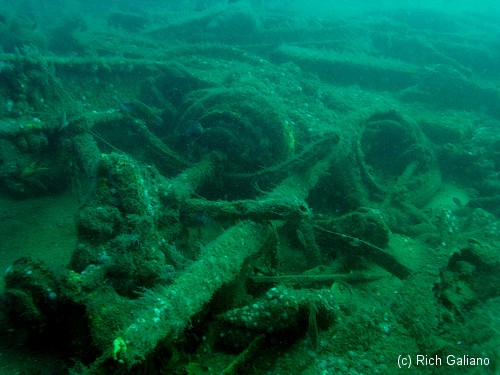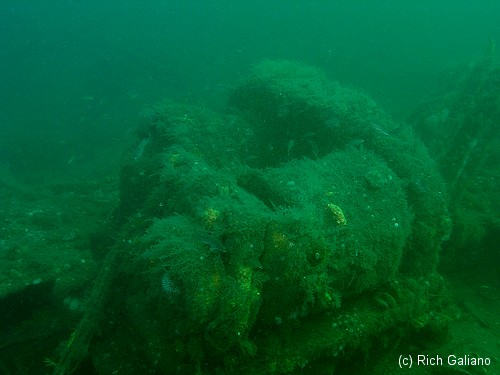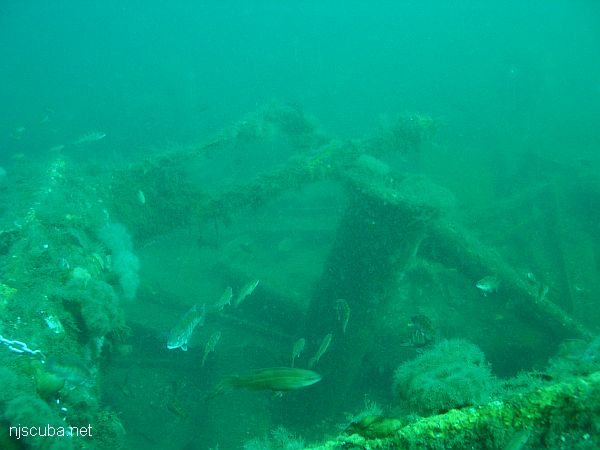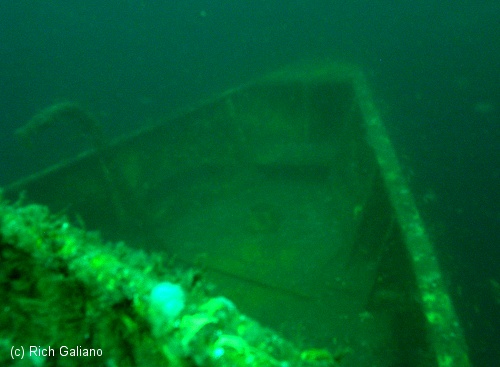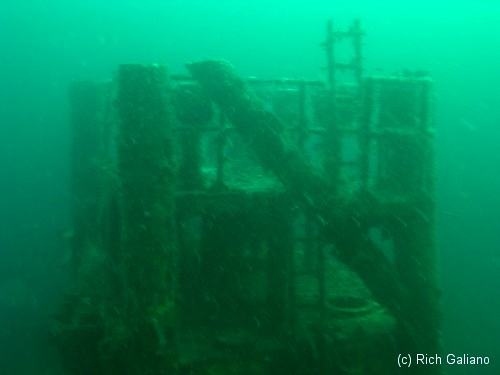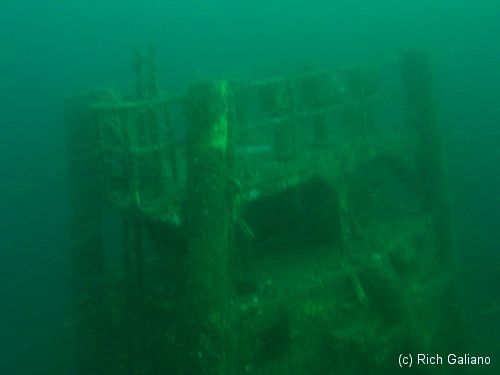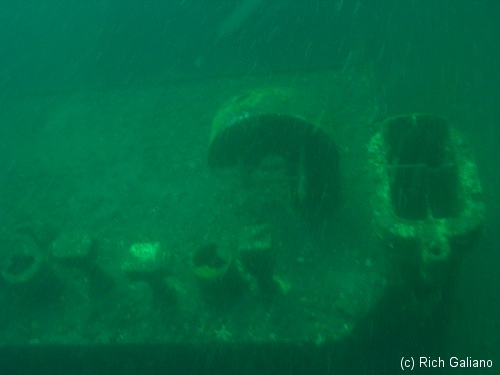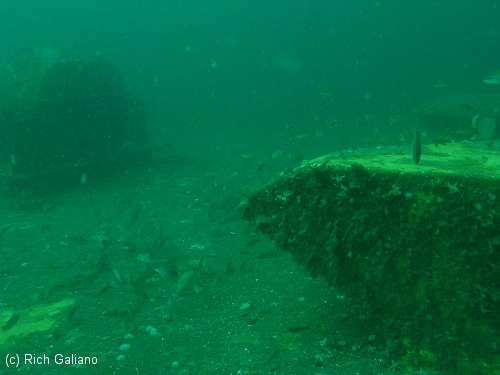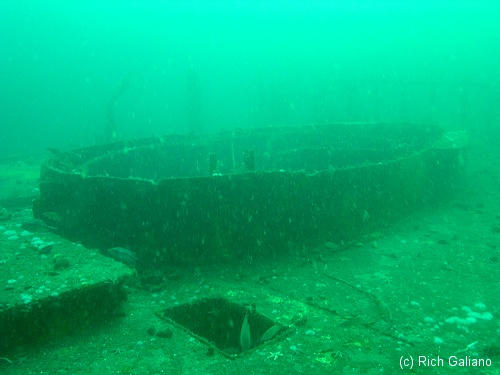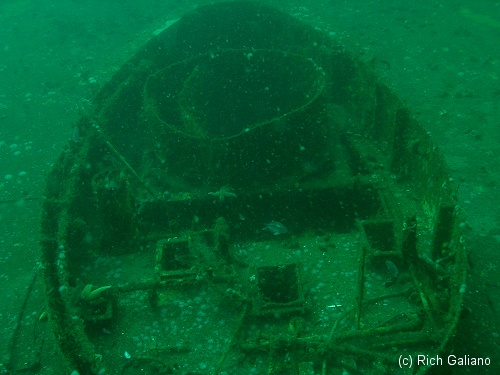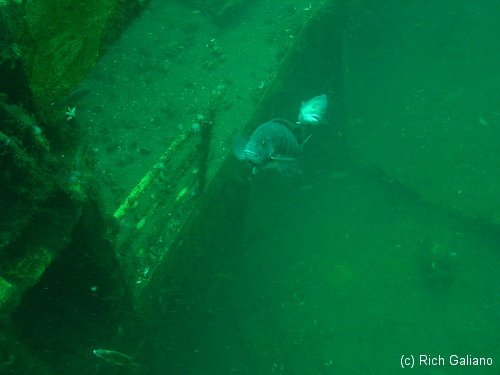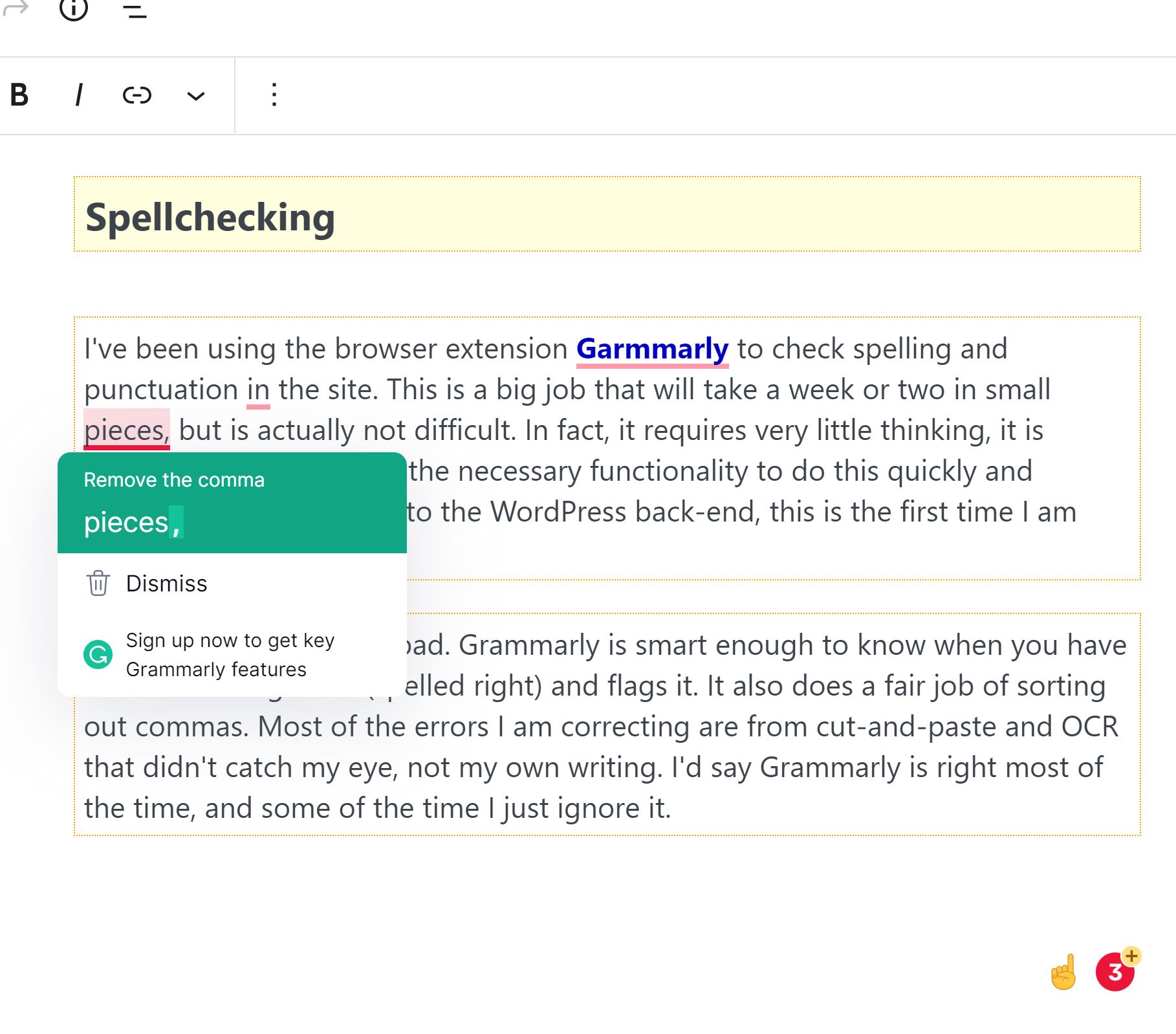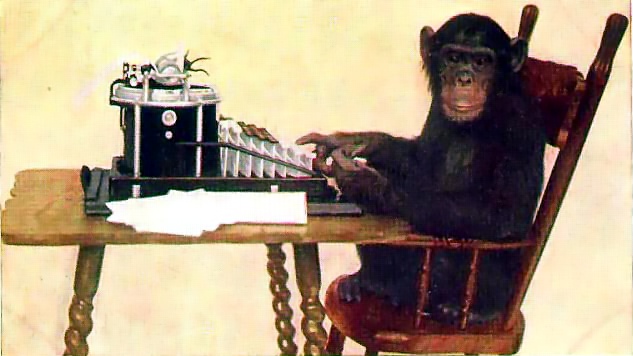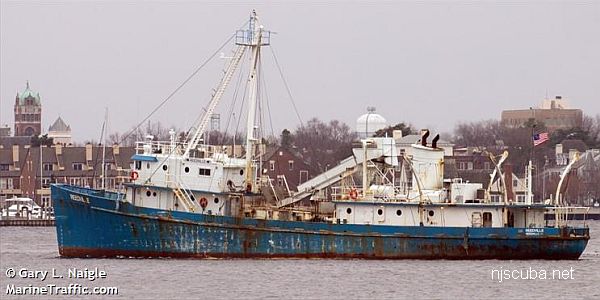The port side of the hull near the bow. The lower part still stands, while the upper part has collapsed.
Fallen hull ribs near the bow.
A large winch and machinery, perhaps for the anchors.
Empty rivet holes on hull plates now lying scattered across the bottom. The curved opening at lower-left looks like it might once have held a porthole.
Rear axle, differential, leaf spring, rubber tire and wheel from a truck, near the bow. The cast iron differential casing has rotted away, but the steel spline gears remain.
An old flathead-six truck engine, with one of the front wheels just behind. You can make out the intake runner, minus carburetor.
Amidships, the front (north) side of the half-buried boiler. There is a second boiler in front of this one, collapsed.
Amidships, the front (north) side of the half-buried boiler. There is a second boiler in front of this one, collapsed.
The back (south) side of the remaining boiler, showing caps for fire tubes. The front side of the boiler is solid. Note the large crack in the corner.
Looking forward at the main reduction gears, just behind the boiler.
These huge gears converted the high-speed of the steam turbines to the much lower speed of the propellers. From the geometry of the exposed portion, I estimate that they are approximately twelve feet in diameter, with about two feet exposed. That places the prop shaft about four feet below the sand, and the bottom of the hull more than 10 feet down. These gears would be connected to the propeller shaft, and surrounded by a casing and smaller drive gears. See marine engines for details of such an installation.
Close-up, with some of the marine growth wiped away to show the diagonal teeth.
Moving aft (south) from the boiler along a crumpled framework. This reminds me of an overhead monorail, and is easily big enough to swim under.
More car parts, near the stern.
The aft port side of the wreck is collapsed inward. This is plainly evident in the side-scan image above.
Some kind of heavy machinery.
The Mohawk is mostly just an incomprehensible jumble.
It takes a lot of diving to learn your way around this mess. I've been diving it and studying it about once a week all season (2004), and it's starting to make sense. For the casual diver without such experience, a wreck reel is strongly advised. If nothing else, you can use it as an upline once you realize that not using it from the start was a mistake.
A scene at the extreme stern end of the wreck. For scale, the 'pipe' in the scene is actually a deck support, and is over a foot in diameter.

